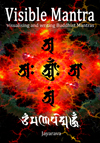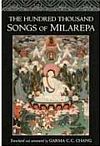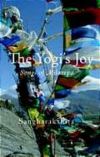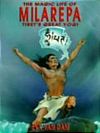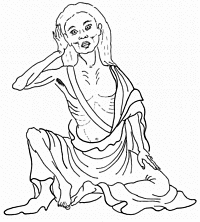
Milarepa lived in Tibet in the 11th century. As a young man he used black magic to take revenge on his wicked uncle. Apalled by the results of the magic he seeks advice, and he is told to seek out Marpa who will teach him the Dharma. Marpa puts Milarepa through a series of trials, and then gives him the abhiṣeka. Milarepa's two main disciples were Rechungpa and Gampopa. One of Gampopa's disciples became the first Karmapa, and founded the Kargyu lineage which is one of the four major lineages of Tibetan Buddhism.
One of the classic poses in which Milarepa is depicted shows him cupping his right hand to his ear. Vessantara suggests that he appears to be listening to an inner voice of the Dharma, but that some authorities say that it is a yogic posture designed to affect the body's subtle energies. Milarepa is often coloured light green, due it is said, to his diet of nettle soup during his long period of solitary meditation.
Mantra
Tibetan (Uchen)

Siddhaṃ

Transliteration
oṃ āḥ gu ru ha sa va jra sa rva si ddhi hūṃ
oṃ āḥ guru hasavajra sarvasiddhi hūṃ
Notes
Guru is of course 'teacher'. The word hasa meaning 'laughing' - Milarepa being sometimes known as the Laughing vajra (Tibetan: Zhepa Dorje). Laughing Vajra is also a translation of Hevajra. Sarvasiddhi means 'all accomplished', or 'all accomplishing'.
There are some variations on this mantra.
- oṃ āḥ guru hasavajra hūṃ - used for instance in the Shambala Milarepa Day celebrations.
- oṃ āḥ guru hasavajra sarvasiddhi phala hūṃ - phala means 'fruit' or 'result' and in this context is a synonym for siddhi. It is recommended by Lama Yeshe for benefitting animals.
My drawing of Milarepa is based on one by Eva Van Dam in her graphic novel The Magic Life of Milarepa
Video
Milarepa mantra being chanted during a ritual

